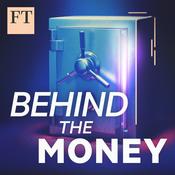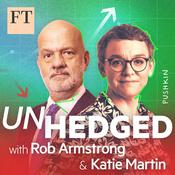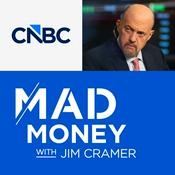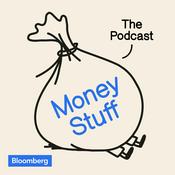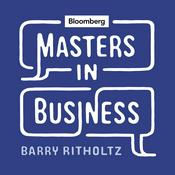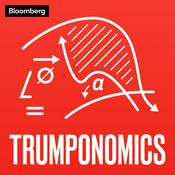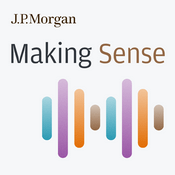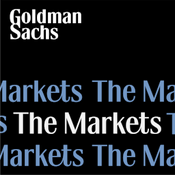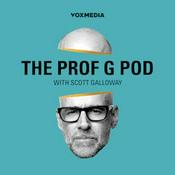1535 episodes

Bigger Tax Refunds Likely to Power the Economy
02/1/2026 | 3 mins.
Our U.S. Economist Heather Berger discusses how larger tax refunds in 2026 could boost income and help support consumer balance sheets throughout the year.Read more insights from Morgan Stanley. ----- Transcript -----Welcome to Thoughts on the Market and Happy New Year! I’m Heather Berger, from Morgan Stanley’s US Economics Team. On today’s episode – why U.S. consumers can expect higher tax refunds, and what that means for the overall economy. It’s Friday, January 2nd, at 10am in New York.As we kick off 2026, it’s not just a fresh start. It’s also the time when tax refund season is right around the corner. For many of us, those refunds aren’t just numbers on a page; they shape the way we budget for many everyday expenses. The timing and size of our refunds this year could make a real difference in how much we’re able to save, spend, or get ahead on bills.In the wake of the One Big Beautiful Bill Act, this year’s tax refund season is shaping up to be bigger than usual. The new fiscal bill packed in a variety of tax cuts for consumers. It also included spending cuts to programs such as SNAP benefits and Medicaid, but most of those cuts don’t pick up until later this decade. Altogether, this means that we’ll likely see personal incomes and spending power get a boost in 2026.Many of the new deductions and tax credits for consumers in the bill were made retroactive to the 2025 fiscal year. These include deductions for tips and overtime, a higher child tax credit, an increased senior deduction, and a higher cap on state and local tax deductions, among others. The retroactive portion of these measures should be reflected in tax refunds early this year. Overall, we’re expecting these changes to increase refunds by 15 to 20 percent on average. And different groups will benefit from different parts of the bill. For example, the higher state and local tax cap is likely to help high-income consumers the most, while deductions for tips and overtime will be most valuable to middle-income earners.Historically, U.S. consumers receive about 30 to 45 percent of tax refunds by the end of February, with then 60 to 70 percent arriving by the end of March. Because of the new tax provisions, we're anticipating a noticeable boost in personal income during the first quarter of the year. While we do also expect this legislation to encourage higher spending, it's unlikely that we'll see spending rise as sharply as income right away. According to surveys, most consumers say they use their refunds mainly for saving or paying down debt. This can lead to healthier balance sheets, which is shown by higher prepayment rates and fewer loan delinquencies during the tax refund season.When people choose to spend all or some of their tax refunds, they typically put that money toward everyday needs, travel, new clothes, or home improvements. Looking ahead, we do still see some near-term headwinds to spending, such as expected increases in inflation from tariffs and the expiration of the Affordable Care Act credits, which will most affect low-income consumers. As we progress throughout the year, though, we’re anticipating steady growth in real consumer spending as the labor market stabilizes, inflation decelerates, and lagged effects of easier monetary policy flow through. On top of that, this year’s larger tax refunds should give another lift to household spending.The boost to spending, along with other corporate provisions in the bill, should give the broader economy a push this year too. We expect the bill as a whole to support GDP growth in 2026. But it then becomes a drag on growth in later years when more of the spending cuts take effect.Thanks for listening. If you enjoy the show, please leave us a review wherever you listen and share Thoughts on the Market with a friend or colleague today.

Special Encore: What’s Driving U.S. Growth in 2026
31/12/2025 | 7 mins.
Original Release Date: November 25, 2025Our Chief U.S. Economist Michael Gapen breaks down how growth, inflation and the AI revolution could play out in 2026.Read more insights from Morgan Stanley.----- Transcript -----Michael Gapen: Welcome to Thoughts on the Market. I’m Michael Gapen, Morgan Stanley’s Chief U.S. Economist.Today I'll review our 2026 U.S. Economic Outlook and what it means for growth, inflation, jobs and the Fed.It’s Tuesday, November 25th, at 10am in New York.If 2025 was the year of fast and furious policy changes, then 2026 is when the dust settles.Last year, we predicted slow growth and sticky inflation, mainly because of strict trade and immigration policies – and this proved accurate. But this year, the story is changing. We see the U.S. economy finally moving past the high-uncertainty phase. Looking ahead, we see a return to modest growth of 1.8 percent in 2026 and 2 percent in 2027. Inflation should cool but it likely won’t hit the Fed’s 2 percent target. By the end of 2026, we see headline PCE inflation at 2.5 percent, core inflation at 2.6 percent, and both stay above the 2 percent target through 2027. In other words, the inflation fight isn’t over, but the worst is behind us.So, if 2025 was slow growth and sticky inflation, then 2026 and [20]27 could be described as moderate growth and disinflation. The impact of trade and immigration policies should fade, and the economic climate should improve. Now, there are still some risks. Tariffs could push prices higher for consumers in the near term; or if firms cannot pass through tariffs, we worry about additional layoffs. But looking ahead to the second half of 2026 and beyond, we think those risks shift to the upside, with a better chance of positive surprises for growth.After all, AI-related business spending remains robust and upper income consumers are faring well. There is reason for optimism. That said, we think the most likely path for the economy is the return to modest growth. U.S. consumers start to rebound, but slowly. Tariffs will keep prices firm in the first half of 2026, squeezing purchasing power for low- and middle-income households. These households consume mainly through labor market income, and until inflation starts to retreat, purchasing power should be constrained.Real consumption should rise 1.6 percent in 2026 and 1.8 [percent] in 2027 – better, but not booming. The main culprit is a labor market that’s still in ‘low-hire, low-fire’ mode driven by immigration controls and tariff effects that keep hiring soft. We see unemployment peaking at 4.7 percent in the second quarter of 2026, then easing to 4.5 percent by year-end. Jobs are out there, but the labor market isn’t roaring. It'll be hard for hiring to pick up until after tariffs have been absorbed.And when jobs cool, the Fed steps in. The Fed is cutting rates – but at a cost. After two 25 basis point rate cuts in September and October, we expect 75 basis points more by mid 2026, bringing the target range to 3.0-3.25 percent. Why? To insure against labor market weakness. But that insurance comes with a price: inflation staying above target longer. Think of it as the Fed walking a tightrope—lean too far toward jobs, and inflation lingers; lean too far toward inflation, and growth stumbles. For now the Fed has chosen the former.And how does AI fit into the macro picture? It’s definitely a major growth driver. Spending on AI-related hardware, software, and data centers adds about 0.4 percent to growth in both 2026 and 2027. That’s roughly 20 percent of total growth. But here’s the twist: imports dilute the impact. After accounting for imported tech, AI’s net contribution falls sharply. Still, we expect AI to boost productivity by 25-35 basis points by 2027, over our forecast horizon, marking the start of a new innovation cycle. In short: AI is planting the seeds now for bigger gains later.Of course, there are risks to our outlook. And let me flag three important ones. First, demand upside – meaning fiscal stimulus and business optimism push growth higher; under this scenario inflation stays hot, and the Fed pauses cuts. If the economy really picks up, then the Fed may need to take back the risk management cuts it's putting in now. That would be a shock to markets. Second, there’s a productivity upside – in which case AI delivers bigger productivity gains, disinflation resumes, and rates drift lower. And lastly, a potential mild recession where tariffs and tight policy bite harder, GDP turns negative in early 2026, and the Fed slashes rates to near 1 percent. So in summary: 2026 looks to be a transition year with less drama but more nuance, as growth returns and inflation cools, while AI keeps rewriting the playbook.Thanks for listening. If you enjoy the show, please leave us a review wherever you listen and share Thoughts on the Market with a friend or colleague today.

Special Encore: Investors’ Top Questions for 2026
30/12/2025 | 11 mins.
Original Release Date: December 3, 2025Our Global Head of Fixed Income Research and Public Policy Strategy Michael Zezas and Chief Global Cross-Asset Strategist Serena Tang address themes that are key for markets next year.Read more insights from Morgan Stanley.----- Transcript -----Michael Zezas: Welcome to Thoughts on the Market. I'm Michael Zezas, Global Head of Fixed Income Research and Public Policy Strategy.Serena Tang: And I'm Serena Tang, Morgan Stanley's Chief Global Cross-Asset Strategist.Michael Zezas: Today we'll be talking about key investor debates coming out of our year ahead outlook.It's Wednesday, December 3rd at 10:30am in New York.So, Serena, it was a couple weeks ago that you led the publication of our cross-asset outlook for 2026. And so, you've been engaging with clients over the past few weeks about our views – where they differ. And it seems there's some common themes, really common questions that come up that represent some important debates within the market.Is that fair?Serena Tang: Yeah, that's very fair. And, by the way, I think those important debates, are from investors globally. So, you have investors in Europe, Asia, Australia, North America, all kind of wanting to understand our views on AI, on equity valuations, on the dollar.Michael Zezas: So, let's start with talking about equity markets a bit. And one of the common questions – and I get it too, even though I don't cover equity markets – is really about how AI is affecting valuations. One of the concerns is that the stock market might be too high, might be overvalued because people have overinvested in anything related to AI. What does the evidence say? How are you addressing that question?Serena Tang: It is interesting you say that because I think when investors talk about equities being too high, of valuations – AI related valuations being very stretched, it's very much about parallels to that 1990s valuation bubble.But the way I approach it is like there are some very important differences from that time period, from valuations back then. First of all, I think companies in major equity indices are higher quality than the past. They operate more efficiently. They deliver strong profitability, and in general pretty solid free cash flow.I think we also need to consider how technology now represents a larger share of the index, which has helped push overall net margins to about 14 percent compared to 8 percent during that 1990s valuation bubble. And you know, when margins are higher, I think paying premium for stocks is more justified.In other words, I think multiples in the U.S. right now look more reasonable after adjusting for profit margins and changes in index composition. But we also have to consider, and this is something that we stress in our outlook, the policy backdrop is unusually favorable, right? Like you have economists expecting the Fed to continue easing rates into next year. We have the One Big Beautiful Bill Act that could lower corporate taxes, and deregulation is continuing to be a priority in the U.S.And I think this combination, you know, monetary easing, fiscal stimulus, deregulation. That combination rarely occurs outside of a recession. And I think this creates an environment that supports valuation, which is by the way why we recommend an overweight position in U.S. equities, even if absolute and relative valuation look elevated.Michael Zezas: Got it. So, if I'm hearing you right, what I think you're saying is that comparisons to some bubbles of the past don't necessarily stack up because profitability is better. There aren't excesses in the system. Monetary policy might be on the path that's more accommodative. And so, when compared against all of that, the valuations actually don't look that bad.Serena Tang: Exactly.Michael Zezas: Got it. And sticking with the equity markets, then another common question is – it's related to AI, but it's sort of around this idea that a small set of companies have really been driving most of the growth in the market recently. And it would be better or healthier if the equity market were to perform across a wider set of companies and names, particularly in mid- and small cap companies. Is that something that we see on the horizon?Serena Tang: Yes. We are expecting U.S. stock earnings to sort of broaden out here and it's one of the reasons why our U.S. equity strategy team has upgraded small caps and now prefer it over large caps. And I think like all of this – it comes from the fact that we are in a new bull market. I think we have a very early cycle earnings recovery here. I mean, as discussed before, the macro environment is supportive. And Fed rate cuts over the next 12 months, growth positive tax and regulatory policies, they don't just support valuations. They also act as a tailwind to earnings.And I think like on top of that, leaner cost structures, improving earnings revisions, AI driven efficiency gains. They all support a broad-based earnings upturn. and our U.S. equity strategy team do see above consensus 2026 earnings growth at 17 percent. The only other region where we have earnings growth above consensus in 2026 is Japan; for both Europe and the EM we are below, which drive out equal weight and slight underweight position in those two indices respectively.Michael Zezas: Got it. And so, since we can't seem to get away from talking about AI and how it's influencing markets, the other common question we get here is around debt issuance related to AI.So, our colleagues put together a report from earlier this year talking about the potential for nearly $3 trillion of AI related CapEx spending over the next few years. And we think about half of that is going to have to be debt financed. That seems to be a lot of debt, a lot of potential bonds that might be issued into the market – which, are credit investors supposed to be concerned about that?Serena Tang: We really can't get away from AI as a topic. And I think this will continue because AI-related CapEx is a long-term trend, with much of the CapEx still really ahead. And I think this goes to your question. Because this really means that we expect nearly another [$]3 trillion of data center related CapEx from here to 2028. You know, while half of the spend will come from operating cash flows of hyperscalers, it still leaves a financing gap of around [$]1.5 trillion, which needs to be sourced through various credit channels.Now, part of it will be via private credit, part of it would be via Asset Backed Securities. But some of it would also be via the U.S. investment grade corporate credit bond space. So, add in financing for faster M&A cycle, we forecast around [$]1 trillion in net investment grade bond issuance, you know, up 60 percent from this year.And I think given this technical backdrop, even though credit fundamentals should stay fine, we have doubled downgraded U.S. investment grade corporate credit to underweight within our cross asset allocation.Michael Zezas: Okay, so the fundamentals are fine, but it's just a lot of debt to consume over the next year. And so somewhat strangely, you might expect high yield corporate bonds actually do better.Serena Tang: Yes, because I think a high yield doesn't really see the same headwind from the technical side of things. And on the fundamentals front, our credit team actually has default rates coming down over the next 12 months, which again, I think supports high yield much better than investment grade.Michael Zezas: So, before we wrap up, moving away from the equity markets, let's talk about foreign exchange. The U.S. dollar spent much of last year weakening, and that's a call that our team was early to – eventually became a consensus call. It was premised on the idea that the U.S. was going to experience growth weakness, that there would also be these questions among investors about the role of the dollar in the world as the U.S. was raising trade barriers. It seemed to work out pretty well.Going into 2026 though, I think there's some more questions amongst our investors about whether or not that trend could continue. Where do we land?Serena Tang: I think in the first half of next year that downward pressure on the dollar should still persist. And you know, as you said, we've had a very differentiated view for most of this year, expecting the dollar to weaken in the first half versus G10 currencies. And several things drive this. There is a potential for higher dollar negative risk premium, driven by, I think, near term worries about the U.S. labor markets in the short term. And as investors, I think, debate the likely composition of the FOMC next year. Also, you know, compression in U.S. versus rest of the world. Rate differentials should reduce FX hedging costs, which also adds incentive for hedging activity and dollar selling.All this means that we see downward pressure on the dollar persisting in the first half of next year with EUR/USD at 123 and USD/JPY at 140 by the end of first half 2026.Michael Zezas: All right. Well, that's a pretty good survey about what clients care about and what our view is. So, Serena, thanks for taking the time to talk with me today.Serena Tang: And thank you for inviting me to the show today.Michael Zezas: And to our audience, thanks for listening. If you enjoy Thoughts on the Market, please leave us a review and share the podcast. We want everyone to listen.

Special Encore: Who’s Disrupting — and Funding — the AI Boom
29/12/2025 | 14 mins.
Original Release Date: November 13, 2025Live from Morgan Stanley’s European Tech, Media and Telecom Conference in Barcelona, our roundtable of analysts discusses tech disruptions and datacenter growth, and how Europe factors in.Read more insights from Morgan Stanley.----- Transcript -----Paul Walsh: Welcome to Thoughts on the Market. I'm Paul Walsh, Morgan Stanley's European Head of Research Product. Today we return to my conversation with Adam Wood. Head of European Technology and Payments, Emmet Kelly, Head of European Telco and Data Centers, and Lee Simpson, Head of European Technology. We were live on stage at Morgan Stanley's 25th TMT Europe conference. We had so much to discuss around the themes of AI enablers, semiconductors, and telcos. So, we are back with a concluding episode on tech disruption and data center investments. It's Thursday the 13th of November at 8am in Barcelona. After speaking with the panel about the U.S. being overweight AI enablers, and the pockets of opportunity in Europe, I wanted to ask them about AI disruption, which has been a key theme here in Europe. I started by asking Adam how he was thinking about this theme. Adam Wood: It’s fascinating to see this year how we've gone in most of those sectors to how positive can GenAI be for these companies? How well are they going to monetize the opportunities? How much are they going to take advantage internally to take their own margins up? To flipping in the second half of the year, mainly to, how disruptive are they going to be? And how on earth are they going to fend off these challenges? Paul Walsh: And I think that speaks to the extent to which, as a theme, this has really, you know, built momentum. Adam Wood: Absolutely. And I mean, look, I think the first point, you know, that you made is absolutely correct – that it's very difficult to disprove this. It's going to take time for that to happen. It's impossible to do in the short term. I think the other issue is that what we've seen is – if we look at the revenues of some of the companies, you know, and huge investments going in there. And investors can clearly see the benefit of GenAI. And so investors are right to ask the question, well, where's the revenue for these businesses? You know, where are we seeing it in info services or in IT services, or in enterprise software. And the reality is today, you know, we're not seeing it. And it's hard for analysts to point to evidence that – well, no, here's the revenue base, here's the benefit that's coming through. And so, investors naturally flip to, well, if there's no benefit, then surely, we should focus on the risk. So, I think we totally understand, you know, why people are focused on the negative side of things today. I think there are differences between the sub-sectors. I mean, I think if we look, you know, at IT services, first of all, from an investor point of view, I think that's been pretty well placed in the losers’ buckets and people are most concerned about that sub-sector… Paul Walsh: Something you and the global team have written a lot about. Adam Wood: Yeah, we've written about, you know, the risk of disruption in that space, the need for those companies to invest, and then the challenges they face. But I mean, if we just keep it very, very simplistic. If Gen AI is a technology that, you know, displaces labor to any extent – companies that have played labor arbitrage and provide labor for the last 20 - 25 years, you know, they're going to have to make changes to their business model. So, I think that's understandable. And they're going to have to demonstrate how they can change and invest and produce a business model that addresses those concerns. I'd probably put info services in the middle. But the challenge in that space is you have real identifiable companies that have emerged, that have a revenue base and that are challenging a subset of the products of those businesses. So again, it's perfectly understandable that investors would worry. In that context, it's not a potential threat on the horizon. It's a real threat that exists today against certainly their businesses. I think software is probably the most interesting. I'd put it in the kind of final bucket where I actually believe… Well, I think first of all, we certainly wouldn't take the view that there's no risk of disruption and things aren't going to change. Clearly that is going to be the case. I think what we'd want to do though is we'd want to continue to use frameworks that we've used historically to think about how software companies differentiate themselves, what the barriers to entry are. We don't think we need to throw all of those things away just because we have GenAI, this new set of capabilities. And I think investors will come back most easily to that space. Paul Walsh: Emmet, you talked a little bit there before about the fact that you haven't seen a huge amount of progress or additional insight from the telco space around AI; how AI is diffusing across the space. Do you get any discussions around disruption as it relates to telco space? Emmet Kelly: Very, very little. I think the biggest threat that telcos do see is – it is from the hyperscalers. So, if I look at and separate the B2C market out from the B2B, the telcos are still extremely dominant in the B2C space, clearly. But on the B2B space, the hyperscalers have come in on the cloud side, and if you look at their market share, they're very, very dominant in cloud – certainly from a wholesale perspective. So, if you look at the cloud market shares of the big three hyperscalers in Europe, this number is courtesy of my colleague George Webb. He said it's roughly 85 percent; that's how much they have of the cloud space today. The telcos, what they're doing is they're actually reselling the hyperscale service under the telco brand name. But we don't see much really in terms of the pure kind of AI disruption, but there are concerns definitely within the telco space that the hyperscalers might try and move from the B2B space into the B2C space at some stage. And whether it's through virtual networks, cloudified networks, to try and get into the B2C space that way. Paul Walsh: Understood. And Lee maybe less about disruption, but certainly adoption, some insights from your side around adoption across the tech hardware space? Lee Simpson: Sure. I think, you know, it's always seen that are enabling the AI move, but, but there is adoption inside semis companies as well, and I think I'd point to design flow. So, if you look at the design guys, they're embracing the agentic system thing really quickly and they're putting forward this capability of an agent engineer, so like a digital engineer. And it – I guess we've got to get this right. It is going to enable a faster time to market for the design flow on a chip. So, if you have that design flow time, that time to market. So, you're creating double the value there for the client. Do you share that 50-50 with them? So, the challenge is going to be exactly as Adam was saying, how do you monetize this stuff? So, this is kind of the struggle that we're seeing in adoption. Paul Walsh: And Emmet, let's move to you on data centers. I mean, there are just some incredible numbers that we've seen emerging, as it relates to the hyperscaler investment that we're seeing in building out the infrastructure. I know data centers is something that you have focused tremendously on in your research, bringing our global perspectives together. Obviously, Europe sits within that. And there is a market here in Europe that might be more challenged. But I'm interested to understand how you're thinking about framing the whole data center story? Implications for Europe. Do European companies feed off some of that U.S. hyperscaler CapEx? How should we be thinking about that through the European lens? Emmet Kelly: Yeah, absolutely. So, big question, Paul. What… Paul Walsh: We've got a few minutes! Emmet Kelly: We've got a few minutes. What I would say is there was a great paper that came out from Harvard just two weeks ago, and they were looking at the scale of data center investments in the United States. And clearly the U.S. economy is ticking along very, very nicely at the moment. But this Harvard paper concluded that if you take out data center investments, U.S. economic growth today is actually zero. Paul Walsh: Wow. Emmet Kelly: That is how big the data center investments are. And what we've said in our research very clearly is if you want to build a megawatt of data center capacity that's going to cost you roughly $35 million today. Let's put that number out there. 35 million. Roughly, I'd say 25… Well, 20 to 25 million of that goes into the chips. But what's really interesting is the other remaining $10 million per megawatt, and I like to call that the picks and shovels of data centers; and I'm very convinced there is no bubble in that area whatsoever.So, what's in that area? Firstly, the first building block of a data center is finding a powered land bank. And this is a big thing that private equity is doing at the moment. So, find some real estate that's close to a mass population that's got a good fiber connection. Probably needs a little bit of water, but most importantly needs some power. And the demand for that is still infinite at the moment. Then beyond that, you've got the construction angle and there's a very big shortage of labor today to build the shells of these data centers. Then the third layer is the likes of capital goods, and there are serious supply bottlenecks there as well.And I could go on and on, but roughly that first $10 million, there's no bubble there. I'm very, very sure of that. Paul Walsh: And we conducted some extensive survey work recently as part of your analysis into the global data center market. You've sort of touched on a few of the gating factors that the industry has to contend with. That survey work was done on the operators and the supply chain, as it relates to data center build out. What were the key conclusions from that? Emmet Kelly: Well, the key conclusion was there is a shortage of power for these data centers, and… Paul Walsh: Which I think… Which is a sort of known-known, to some extent. Emmet Kelly: it is a known-known, but it's not just about the availability of power, it's the availability of green power. And it's also the price of power is a very big factor as well because energy is roughly 40 to 45 percent of the operating cost of running a data center. So, it's very, very important. And of course, that's another area where Europe doesn't screen very well.I was looking at statistics just last week on the countries that have got the highest power prices in the world. And unsurprisingly, it came out as UK, Ireland, Germany, and that's three of our big five data center markets. But when I looked at our data center stats at the beginning of the year, to put a bit of context into where we are…Paul Walsh: In Europe… Emmet Kelly: In Europe versus the rest. So, at the end of [20]24, the U.S. data center market had 35 gigawatts of data center capacity. But that grew last year at a clip of 30 percent. China had a data center bank of roughly 22 gigawatts, but that had grown at a rate of just 10 percent. And that was because of the chip issue. And then Europe has capacity, or had capacity at the end of last year, roughly 7 to 8 gigawatts, and that had grown at a rate of 10 percent. Now, the reason for that is because the three big data center markets in Europe are called FLAP-D. So, it's Frankfurt, London, Amsterdam, Paris, and Dublin. We had to put an acronym on it. So, Flap-D. Good news. I'm sitting with the tech guys. They've got even more acronyms than I do, in their sector, so well done them. Lee Simpson: Nothing beats FLAP-D. Paul Walsh: Yes. Emmet Kelly: It’s quite an achievement. But what is interesting is three of the big five markets in Europe are constrained. So, Frankfurt, post the Ukraine conflict. Ireland, because in Ireland, an incredible statistic is data centers are using 25 percent of the Irish power grid. Compared to a global average of 3 percent.Now I'm from Dublin, and data centers are running into conflict with industry, with housing estates. Data centers are using 45 percent of the Dublin grid, 45. So, there's a moratorium in building data centers there. And then Amsterdam has the classic semi moratorium space because it's a small country with a very high population. So, three of our five markets are constrained in Europe. What is interesting is it started with the former Prime Minister Rishi Sunak. The UK has made great strides at attracting data center money and AI capital into the UK and the current Prime Minister continues to do that. So, the UK has definitely gone; moved from the middle lane into the fast lane. And then Macron in France. He hosted an AI summit back in February and he attracted over a 100 billion euros of AI and data center commitments. Paul Walsh: And I think if we added up, as per the research that we published a few months ago, Europe's announced over 350 billion euros, in proposed investments around AI. Emmet Kelly: Yeah, absolutely. It's a good stat. Now where people can get a little bit cynical is they can say a couple of things. Firstly, it's now over a year since the Mario Draghi report came out. And what's changed since? Absolutely nothing, unfortunately. And secondly, when I look at powering AI, I like to compare Europe to what's happening in the United States. I mean, the U.S. is giving access to nuclear power to AI. It started with the three Mile Island… Paul Walsh: Yeah. The nuclear renaissance is… Emmet Kelly: Nuclear Renaissance is absolutely huge. Now, what's underappreciated is actually Europe has got a massive nuclear power bank. It's right up there. But unfortunately, we're decommissioning some of our nuclear power around Europe, so we're going the wrong way from that perspective. Whereas President Trump is opening up the nuclear power to AI tech companies and data centers. Then over in the States we also have gas and turbines. That's a very, very big growth area and we're not quite on top of that here in Europe. So, looking at this year, I have a feeling that the Americans will probably increase their data center capacity somewhere between – it's incredible – somewhere between 35 and 50 percent. And I think in Europe we're probably looking at something like 10 percent again. Paul Walsh: Okay. Understood. Emmet Kelly: So, we're growing in Europe, but we're way, way behind as a starting point. And it feels like the others are pulling away. The other big change I'd highlight is the Chinese are really going to accelerate their data center growth this year as well. They've got their act together and you'll see them heading probably towards 30 gigs of capacity by the end of next year. Paul Walsh: Alright, we're out of time. The TMT Edge is alive and kicking in Europe. I want to thank Emmett, Lee and Adam for their time and I just want to wish everybody a great day today. Thank you.(Applause) That was my conversation with Adam, Emmett and Lee. Many thanks again to them. Many thanks again to them for telling us about the latest in their areas of research and to the live audience for hearing us out. And a thanks to you as well for listening. Let us know what you think about this and other episodes by living us a review wherever you get your podcasts. And if you enjoy listening to Thoughts on the Market, please tell a friend or colleague about the podcast today.

Special Encore: 2026 U.S. Outlook: The Bull Market’s Underappreciated Narrative
26/12/2025 | 6 mins.
Original Release Date: November 19, 2025Our CIO and Chief U.S. Equity Strategist Mike Wilson explains why he continues to hold on to an out-of-consensus view of a growth positive 2026, despite near-term risks.Read more insights from Morgan Stanley.----- Transcript -----Welcome to Thoughts on the Market. I'm Mike Wilson, Morgan Stanley’s CIO and Chief U.S. Equity Strategist. Today I’ll discuss our outlook for 2026 that we published earlier this week. It’s Wednesday, Nov 19th at 6:30 am in New York. So, let’s get after it. 2026 is a continuation of the story we have been telling for the past year. Looking back to a year ago, our U.S. equity outlook was for a challenging first half, followed by a strong second half. At the time of publication, this was an out of consensus stance. Many expected a strong first half, as President Trump took office for his second term. And then a more challenging second half due to the return of inflation. We based our differentiated view on the notion that policy sequencing in the new Trump administration would intentionally be growth negative to start. We likened the strategy to a new CEO choosing to ‘kitchen sink’ the results in an effort to clear the decks for a new growth positive strategy. We thought that transition would come around mid-year. The U.S. economy had much less slack when President Trump took office the second time, compared to the first time he came into office. And this was the main reason we thought it was likely to be sequenced differently. Earnings revisions breadth and other cyclical indicators were also in a phase of deceleration at the end of 2024. In contrast, at the beginning of 2017—when we were out of consensus bullish—earnings revisions breadth and many cyclical gauges were starting to reaccelerate after the manufacturing and commodity downturn of 2015/2016. Looking back on this year, this cadence of policy sequencing did broadly play out—it just happened faster and more dramatically than we expected. Our views on the policy front still appear to be out of consensus. Many industry watchers are questioning whether policies enacted this year will ultimately lead to better growth going forward, especially for the average stock. From our perspective, the policy choices being made are growth positive for 2026 and are largely in line with our ‘run it hot’ thesis. There’s another factor embedded in our more constructive take. April marked the end of a rolling recession that began three years prior. The final stages were a recession in government thanks to DOGE, a rate of change trough in expectations around AI CapEx growth and trade policy, and a recession in consumer services that is still ongoing. In short, we believe a new bull market and rolling recovery began in April which means it’s still early days, and not obvious—especially for many lagging parts of the economy and market. That is the opportunity. The missing ingredient for the typical broadening in stock performance that happens in a new business cycle is rate cuts. Normally, the Fed would have cut rates more in this type of weakening labor market. But due to the imbalances and distortions of the COVID cycle, we think the Fed is later than normal in easing policy, and that has held back the full rotation toward early cycle winners. Ironically, the government shutdown has weakened the economy further, but has also delayed Fed action due to the lack of labor data releases. This is a near-term risk to our bullish 12-month forecasts should delays in the data continue, or lagging labor releases do not corroborate the recent weakness in non-govt-related jobs data. In our view, this type of labor market weakness coupled with the administration's desire to ‘run it hot’ means that, ultimately, the Fed is likely to deliver more dovish policy than the market currently expects. It's really just a question of timing. But that is a near-term risk for equity markets and why many stocks have been weaker recently. In short, we believe a new bull market began in April with the end of a rolling recession and bear market. Remember the S&P [500] was down 20 percent and the average S&P stock was down more than 30 percent into April. This narrative remains underappreciated, and we think there is significant upside in earnings over the next year as the recovery broadens and operating leverage returns with better volumes and pricing in many parts of the economy. Our forecasts reflect this upside to earnings which is another reason why many stocks are not as expensive as they appear despite our acknowledgement that some areas of the market may appear somewhat frothy. For the S&P 500, our 12-month target is now 7800 which assumes 17 percent earnings growth next year and a very modest contraction in valuation from today’s levels. Our favorite sectors include Financials, Industrials, and Healthcare. We are also upgrading Consumer Discretionary to overweight and prefer Goods over Services for the first time since 2021. Another relative trade we like is Software over Semiconductors given the extreme relative underperformance of that pair and positioning at this point. Finally, we like small caps over large for the first time since March 2021, as the early cycle broadening in earnings combined with a more accommodative Fed provides the backdrop we have been patiently waiting for. We hope you enjoy our detailed report published earlier this week and find it helpful as you navigate a changing marketplace on many levels. Thanks for tuning in. Let us know what you think by leaving us a review. And if you find Thoughts on the Market worthwhile, tell a friend or colleague to try it out!
More Business podcasts
Trending Business podcasts
About Thoughts on the Market
Listen to Thoughts on the Market, Embracing Marketing Mistakes and many other podcasts from around the world with the radio.net app
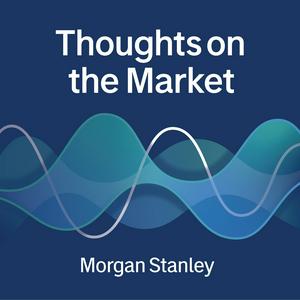
Get the free radio.net app
- Stations and podcasts to bookmark
- Stream via Wi-Fi or Bluetooth
- Supports Carplay & Android Auto
- Many other app features
Get the free radio.net app
- Stations and podcasts to bookmark
- Stream via Wi-Fi or Bluetooth
- Supports Carplay & Android Auto
- Many other app features


Thoughts on the Market
download the app,
start listening.

